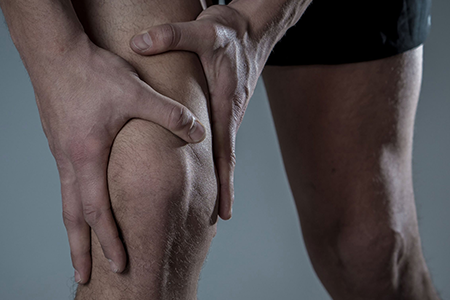If you feel the strain during a workout, then chances are you’re experiencing acute muscle soreness, and in this case the smart advice is to stop. After a few hours, you’re likely to get the next phase which is Delayed Onset Muscle Soreness. After around 24-72 hours, however, it generally tapers off and you’re once again good to go. But it’s often not as simple as that; what one person may consider the usual soreness may actually be an injury, and vice versa. So, what are the differences?
Whilst not an exact science, the main difference is the level and concentration of pain. If you exercise regularly, you will experience the various levels of soreness that come with a workout. If you get some sort of injury like a tear or a sprain, quite simply, most of the time you will know. The pain is a sudden, sharp and concentrated pain that is over and above the usual level of general soreness that will not dissipate in the same way that typical soreness does. But as previously stated, this is not always accurate; sometimes an injury can be sustained that presents as a dull, constant pain.
There is also likely to be more of a limiting effect with an injury than either type of muscle soreness. Whilst it’s not strictly suggested, one can simply ‘work through’ acute muscle soreness and continue their workout. An injury normally causes pain to the point that it is impossible to continue the workout, and unlike soreness, will get more and more painful and limiting the more physical exercise is performed. Think about a time when running that you twisted your ankle, or even worse, possibly sprained it. The difference in pain levels between a sprain and muscle soreness are instantly recognisable; if you have experienced an injury, you’re unlikely to be carrying on with whatever you’re doing.
Another difference between soreness and injury is the way in which you recover from both. Muscle soreness, whilst in theory is simply another form of an injury, is the body’s way of repairing itself; the small muscular tears, inflamed joints and the like that we experience during a normal workout are all fixed with some rest and refrainment from exercise until the pain subsides. With the exception of sprains and some small muscular tears, most sports injuries will actually require some form of medical intervention, not just to repair the damage done, but to stop the injury from actively spreading. Many athletes have soldiered on with torn ligaments or damaged tendons, only to make more work for themselves as they overload an already damaged part of the body and make the injury much worse and far reaching.
Despite all of these ‘tell-tale’ signs, there really is no way to establish whether you have suffered an injury or are simply recovering without sitting back and waiting to see if it subsides. In any case, the best strategy is to refrain from physical activity when the pain comes on; if it’s simple soreness, it’ll clear up in a day or two after some mild discomfort and stiffness. An injury may taper off with the pain, but it won’t go away, and will nearly always come back with a vengeance if you try and do anything. This is the major difference. Remember that if you have experienced injuries before, you are at risk of re-injuring yourself in the same area through repetitive habits and weakness of the recovered area, so be doubly careful. And if you are in any doubt as to what you think you have sustained, stop what you’re doing and seek medical attention.


